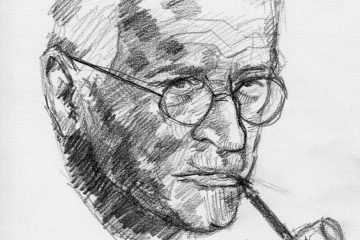
Click below to listen to this article:
ego pruning
ego pruning is a term that refers to the process of reducing one’s egocentric tendencies and developing a more accurate and empathetic understanding of other people’s perspectives. In this article, we will explain the concept of ego pruning and how it can be applied to alleviate a lack of personal congruence.
The concept of ego pruning first emerged in the field of developmental psychology, as a way of describing how children gradually overcome their egocentrism and learn to consider the views and feelings of others (Verywell Mind, 2021). ego pruning can also be applied to adults, who may still struggle with egocentrism in certain situations or domains of life. ego pruning can help adults strengthen their social skills, emotional intelligence, and moral reasoning, as well as reduce their biases and prejudices.
One way to illustrate the concept of ego pruning is to use the quote from the philosopher Bertrand Russell: “The whole problem with the world is that fools and fanatics are always so certain of themselves, and wiser people so full of doubts” (Russell, 1933, p. 28). This quote suggests that ego pruning involves recognizing one’s own limitations and uncertainties, and being open to new information and feedback that may challenge one’s beliefs or assumptions.
Another way to illustrate the concept of ego pruning is to use the quote from the psychologist Carl Rogers: “The curious paradox is that when I accept myself just as I am, then I can change” (Rogers, 1961, p. 17). This quote implies that ego pruning does not mean rejecting or denying one’s self, but rather accepting one’s self as a complex and evolving person who has strengths and weaknesses, virtues and flaws. ego pruning also means accepting others as they are, without imposing one’s expectations or judgments on them.
Masks and the false-self
To understand the benefits of ego pruning, we first need to understand what is going on in our ego, how those incorrect concepts of who we are, got there.
dissociation and the loss of self
Many people, especially those who have suffered childhood abuse, dissociate with aspects of themselves, losing a sense of wholeness. This lack of wholeness often results in a feeling of worthlessness and lack of self-esteem. As a result of this lack of self-esteem, many people judge themselves as broken during adolescence, and it is this decision that often results in the creation of a mask that presents a false self to others, this mask then becoming identified with self.
To expand on this statement, we can consider how dissociation affects the development of identity, memory, and self-regulation. dissociation is a coping mechanism that allows a person to detach from their painful emotions and experiences (Health, 2021). However, this also means that they lose touch with their true feelings, needs, thoughts, and preferences, which are essential for forming a coherent sense of self (Psych Central, 2019). As one survivor of childhood abuse said, “I didn’t know who I was or what I wanted” (Psychology Today, 2017).
Furthermore, dissociation can impair the ability to form memories, especially autobiographical ones that shape one’s life story and sense of continuity (Good Therapy, 2019). Without a clear and consistent memory of one’s past, present, and future, it is difficult to develop a stable identity and self-esteem. Finally, dissociation can disrupt the ability to regulate one’s emotions and impulses, leading to self-destructive behaviours such as self-harm, substance use, or suicidal thinking (Health, 2021). These behaviours can further erode one’s self-worth and confidence. Therefore, dissociation can have profound and lasting effects on one’s sense of self and wellbeing.
Negative self-judgement, leading to the creation of the “mask of self”
The notion that many people judge themselves as broken during adolescence due to a lack of self-esteem and create a mask within the ego to present a false self to others implies that self-esteem and ego development are closely related and influenced by various factors. self-esteem is the global evaluative dimension of self that reflects one’s self-worth or self-image (Harter, 2006). self-esteem ordinarily tends to increase during adolescence and young adulthood, reaching a fairly stable level over time (Orth, Robins, & Widaman, 2012).
However, self-esteem is also affected by the degree of identity firmness, which is the extent to which individuals have a clear and consistent sense of who they are and what they want in life (Chen & Chang, 2019). Identity firmness is based on Erikson’s theory of psychosocial development, which proposes that adolescence is a critical stage for identity formation and exploration (Erikson & Erikson, 1950). According to Erikson, a more confirmed sense of identity leads to positive psychological adjustment and a sense of direction, purpose, and meaning in life. Conversely, a lack of identity firmness results in identity confusion and low self-esteem (Chen & Chang, 2019).
ego development is another aspect of personality that relates to self-esteem and identity. ego development refers to the growth of cognitive and moral reasoning abilities that enable individuals to cope with complex and ambiguous situations (Loevinger & Blasi, 1976). This is also influenced by Erikson’s stages of psychosocial development, as each stage presents a different challenge or crisis that requires a resolution for further ego growth (Loevinger & Blasi, 1976). ego development is associated with various personality variables, such as anxiety, locus of control, authoritarianism, moral reasoning, and self-esteem (Meeus et al., 1999). In general, higher levels of ego development are linked to higher levels of self-esteem and lower levels of anxiety and authoritarianism (Meeus et al., 1999).
Therefore, it can be argued that self-esteem and ego development are interrelated and influenced by the process of identity formation during adolescence. A lack of self-esteem may indicate a lack of identity firmness or ego maturity, which may lead some individuals to judge themselves as broken or inadequate.
Mask creation
To cope with this negative self-evaluation, some individuals may create a mask within the ego that allows them to function in society by presenting a false self to others. However, this mask may also prevent them from achieving a true sense of self and fulfilling their potential. It is suggested that many people hide behind their mask, even cling to it, due to their need to avoid their internal existential crisis, based on this decision to label themselves as broken during adolescence, for example.
Narcissistic collapse
One of the consequences of having a narcissistic personality disorder is the tendency to create a false self or a mask to hide their true feelings of insecurity and vulnerability. However, due to the inherent flaws of the masking process (it is unable to truly imitate true emotions, for example), there often comes a time when the mask fails them dramatically. For example, their partner realises that they are pretending to love them, and chooses to leave the relationship. This can cause a significant existential crisis, whereby the individual is faced with the realisation that they are broken again.
This phenomenon of mask failure has been described by some researchers as a “narcissistic collapse” or a “narcissistic breakdown” (Besser & Priel, 2010; Malkin, 2015). It occurs when the narcissist’s self-image is shattered by external feedback or events that contradict their false sense of self. As a result, they experience intense feelings of shame, guilt, anger, depression and anxiety. They may also resort to desperate measures to restore their lost sense of superiority, such as seeking new sources of admiration, blaming others for their problems, or even becoming suicidal (Besser & Priel, 2010).
One of the challenges of dealing with a narcissist who has experienced a mask failure is that they may not be able to acknowledge or accept their own responsibility for their situation. They may also lack the empathy and insight to understand how their behaviour has affected others. Therefore, it is important for therapists and counsellors to help them develop a more realistic and compassionate view of themselves and others, and to foster their genuine self-esteem and emotional regulation skills (Malkin, 2015).
Coping with mask failure
The solution to this extremely difficult situation, is for the individual whose mask has failed, to go back to the original decision to create the mask, and determine that this decision was flawed. They first have to realise it is the mask that failed, not themselves. They also need to come to a belief that they are not unfixable. That in fact the mask is only getting in the way of knowing themselves truly. That the task at hand, is to recover the parts of self that were lost during childhood, and so recover their sense of wholeness so that they can start to become their authentic self, and lose their reliance on the mask altogether.
This suggests that the way to overcome a failed mask, which is a false self-image that one adopts to cope with trauma or insecurity, is to revisit the original cause of the mask and to heal the wounded parts of the self. This process would allow one to become more authentic and less dependent on the mask. To expand on this statement, we can consider some quotes from experts and researchers regarding masks and authenticity.
One quote that supports the idea that masks are created as a result of childhood trauma is from Alice Miller, a psychotherapist and author of The Drama of the Gifted Child. She writes: “The true opposite of depression is neither gaiety nor the absence of pain, but vitality – the freedom to experience spontaneous feelings. It is part of the kaleidoscope of life that these feelings are not only happy, beautiful, or good but can reflect the entire range of human experience, including envy, jealousy, rage, disgust, greed, despair, and grief. But this freedom cannot be achieved if its childhood roots are cut off. Our access to the true self is possible only when we no longer have to be afraid of the intense emotional world of early childhood. Once we have experienced and become familiar with this world, it is no longer strange and threatening. We no longer need to keep it hidden behind the prison walls of illusion. We know now who we are and who we are not” (Miller, 1997, p. 71).
Another quote that illustrates the idea that masks prevent one from knowing oneself truly is from Brené Brown, a researcher and author of The Gifts of Imperfection. She writes: “authenticity is a collection of choices that we have to make every day. It’s about the choice to show up and be real. The choice, to be honest. The choice to let our true selves be seen” (Brown, 2010, p. 49). She also writes: “We cultivate love when we allow our most vulnerable and powerful selves to be deeply seen and known, and when we honour the spiritual connection that grows from that offering with trust, respect, kindness, and affection” (Brown, 2010, p. 4).
A final quote that reinforces the idea that masks can be discarded and replaced by authentic self-expression is from Carl Rogers, he writes: “What I am is good enough if I would only be it openly” (Rogers, 1980, p. 116).
Remove the mask and embrace the true you
This process of invalidation of the mask of self, while at the same time taking steps to heal the original wound, is a crucial aspect of personal growth and transformation. The mask of self, also known as the false self or the ego, is a construct that we develop to cope with the pain and trauma of our childhood experiences. It is a way of hiding our true self, which is our authentic and vulnerable core, from the world and from ourselves. The mask of self can take many forms, such as perfectionism, narcissism, codependency, or addiction. However, it is ultimately a source of suffering and limitation, as it prevents us from living authentically and fulfilling our potential.
To heal the original wound, which is the loss of connection with our true self and our innate worthiness, we need to challenge and invalidate the mask of self. We need to recognize that it is not who we really are, and that it does not serve us any more. We have to face and feel the emotions that we have repressed and denied for so long, such as anger, sadness, fear, or shame. One must accept and embrace our true self, with all its flaws and strengths, and express it in the world.
This process is not easy or comfortable. It requires courage, honesty, and compassion. It also requires conscious effort and practice over time. However, it is rewarding and liberating. As we prune the ego, we allow more and more of the true self to be expressed. We become more aligned with our values, passions, and purpose. We experience more joy, peace, and love in our lives.
As Carl Jung said, “The privilege of a lifetime is to become who you truly are.” (Jung, 1961/1989, p. 173). Or as Brené Brown put it, “Owning our story and loving ourselves through that process is the bravest thing that we’ll ever do.” (Brown, 2010/2015). These quotes illustrate the importance and the power of invalidating the mask of self and healing the original wound.
References
Besser, A., & Priel, B. (2010). The apple does not fall far from the tree: Attachment styles and personality vulnerabilities to depression in three generations of women. Personality and Social Psychology Bulletin, 36(5), 518-529.
Malkin, C. (2015). Rethinking narcissism: The bad-and surprising good-about feeling special. HarperCollins.
Brown, B. (2010/2015). The gifts of imperfection: Let go of who you think you’re supposed to be and embrace who you are. Random House.
Chen, S.-W., & Chang, L. (2019). Self-identity and self-esteem during different stages of adolescence: The role of identity firmness. Journal of Adolescence, 77, 1–11. https://doi.org/10.1016/j.adolescence.2019.10.001
Erikson, E. H., & Erikson, J. M. (1950). Childhood and society. W.W. Norton.
Good Therapy. (2019). How trauma and dissociation Disrupt Your Ability to Form Memories. Retrieved from https://www.goodtherapy.org/blog/how-trauma-dissociation-disrupt-your-ability-form-memories-0403197
Harter, S. (2006). The self. In W. Damon & R.M. Lerner (Eds.), Handbook of child psychology: Vol 3. Social emotional and personality development (pp. 505–570). Wiley.
Health. (2021). Self-Sabotaging: Why It Happens and How To Stop. Retrieved from https://www.health.com/self-sabotaging-8349073
Jung, C.G. (1961/1989). Memories, dreams, reflections. Vintage Books.
Loevinger, J., & Blasi, A. (1976). ego development: Conceptions and theories. Jossey-Bass.
Meeus, W., Iedema, J., Helsen, M., & Vollebergh, W. (1999). Patterns of adolescent identity development: Review of literature and longitudinal analysis. Developmental Review: DR: The Official Publication Of The Society For Research In Child Development Sponsored By SRCD And The University Of Chicago Press., 19(4), 419–461.
Miller, A. (1997). The drama of the gifted child: The search for the true self (Revised ed.). Basic Books.
Orth U., Robins R.W., Widaman K.F.(2012) Life-span development of self-esteem and its effects on important life outcomes.J Pers Soc Psychol102(6):1271–1288
Psych Central. (2019). How Childhood trauma and dissociation Result in Horrible Adulthood Problems. Retrieved from https://psychcentral.com/blog/psychology-self/2019/03/trauma-dissociation-problems
Psychology Today. (2017). The Role of dissociation in Surviving Childhood Abuse. Retrieved from https://www.psychologytoday.com/us/blog/thriving-after-trauma/202208/the-role-dissociation-in-surviving-childhood-abuse
Rogers, C. R. (1961). On becoming a person: A therapist’s view of psychotherapy. Houghton Mifflin.
Rogers, C. R. (1980). A way of being. Houghton Mifflin.
Russell, B. (1933). The triumph of stupidity. In Mortals and others: American essays 1931-1935 (pp. 28-33). Routledge.
Verywell Mind. (2021). What does it mean to be egocentric? Retrieved from https://www.verywellmind.com/what-does-it-mean-to-be-egocentric-4164279




0 Comments